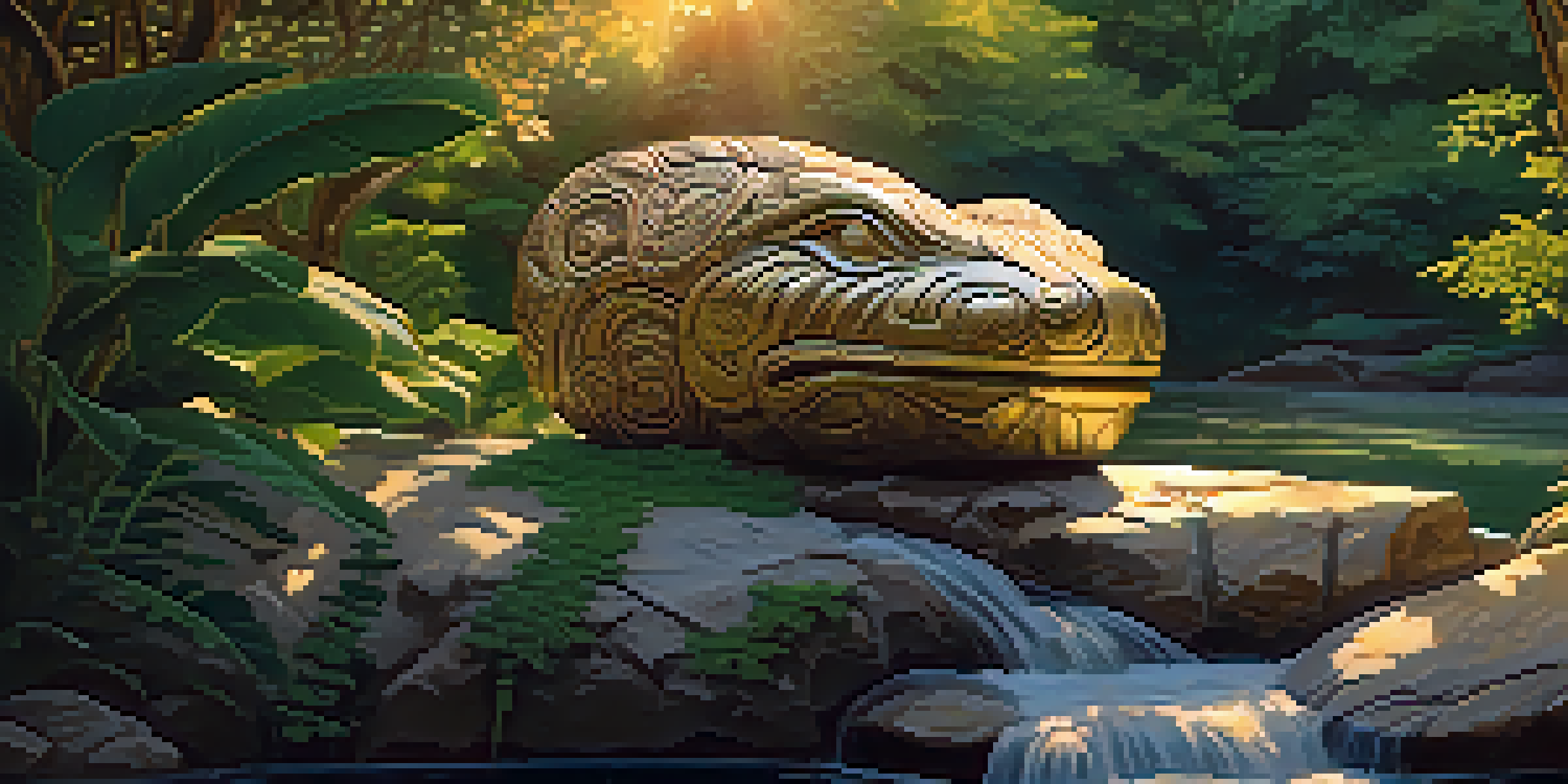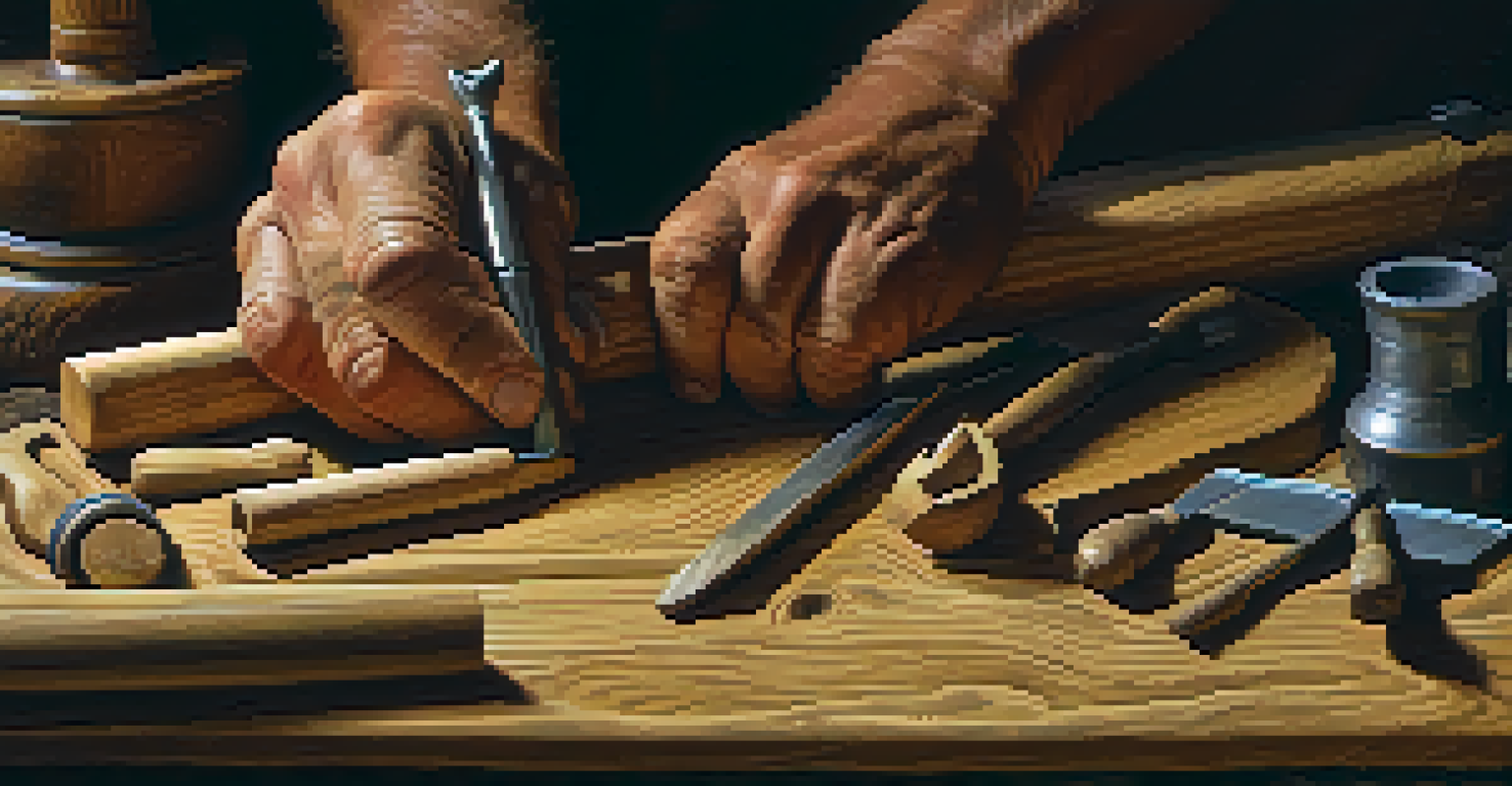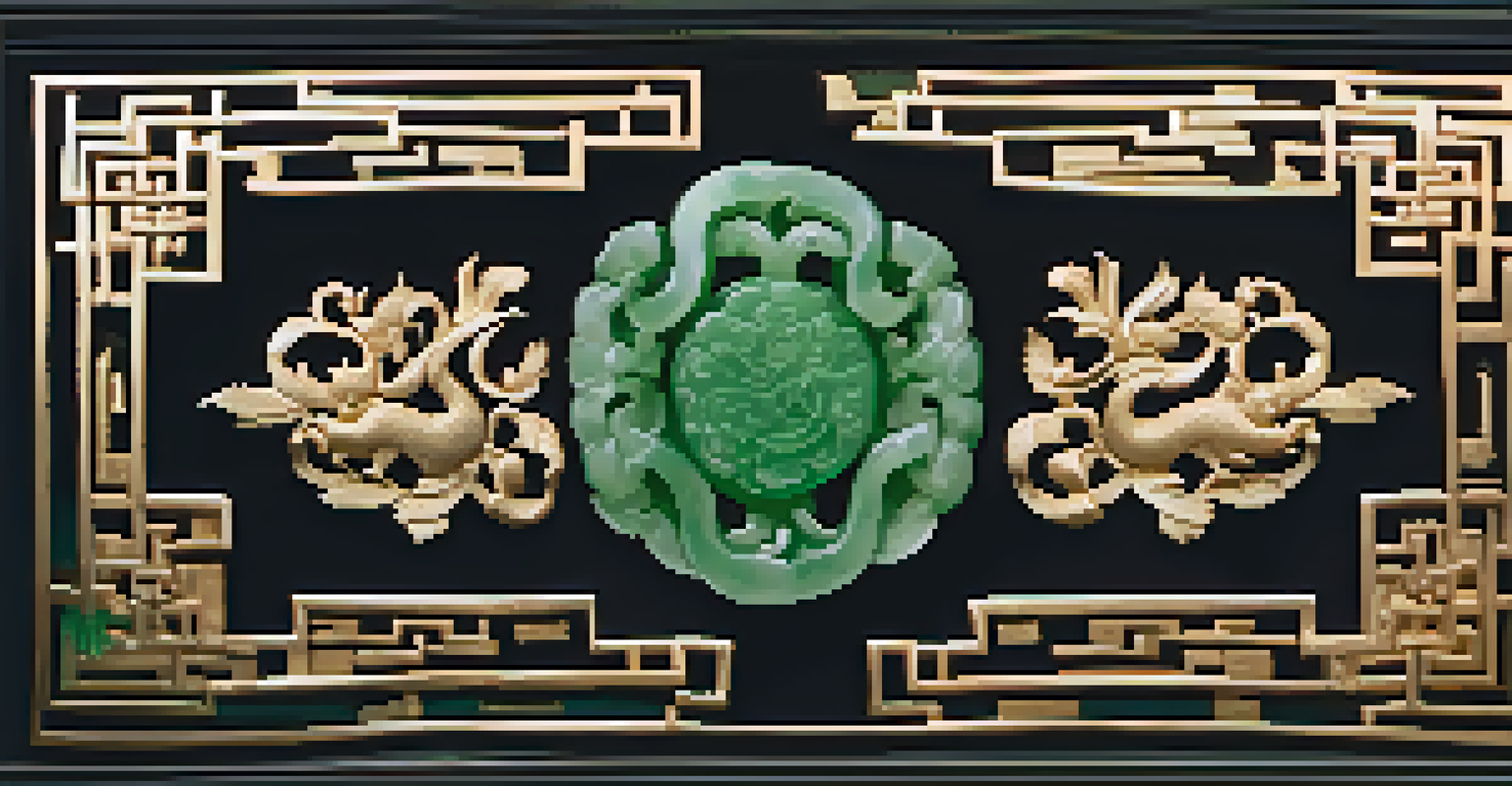Tools and Materials Used in Ancient Carving Techniques

The Origins of Ancient Carving Techniques
Carving is an art form that dates back to prehistoric times, with early humans using rudimentary tools to create functional and decorative items. These initial carvings often served practical purposes, such as tools or weapons, but they also reflected cultural beliefs and artistic expression. As civilizations evolved, so did the complexity and purpose of carving, leading to a rich history of techniques and styles across various cultures.
Art is not freedom from discipline, but disciplined freedom.
From the ancient Egyptians, who carved intricate hieroglyphs into stone, to the Greeks, who created stunning sculptures, each civilization developed unique methods and tools suited to their materials. This evolution showcases not only the advancement in craftsmanship but also the cultural significance of carving in storytelling and religious practices. For example, the intricate carvings on temples often told tales of gods and myths, making them both artistic and educational.
Understanding the origins of these techniques helps us appreciate the skill and creativity that went into ancient carvings. It also highlights how tools and materials played a crucial role in shaping the art form, influencing everything from the size of carvings to the details that could be achieved.
Essential Tools Used in Ancient Carving
Ancient carvers relied on a variety of tools, many of which were simple but effective. Chisels, made from stone, bronze, or iron, were the primary tools used for shaping and detailing. These chisels came in various sizes and shapes, enabling artisans to achieve different textures and effects in their work, from smooth finishes to intricate patterns.

In addition to chisels, other tools like hammers and mallets were essential for applying force to the chisels. The combination of these tools allowed carvers to chip away at their chosen material, be it wood, stone, or ivory, with precision. Over time, as metallurgy advanced, carvers began to use more specialized tools, including drills for creating holes or grooves, further enhancing their craftsmanship.
Ancient Carving Techniques Evolved
Carving has transformed from functional tools to complex artistic expressions, reflecting cultural beliefs and advancements in craftsmanship.
The choice of tools often dictated the final appearance of the carved pieces. For instance, a fine chisel would enable delicate detailing, while a broader tool might be used for rough shaping. This variety not only allowed for creative expression but also reflected the technological advancements of the time.
Materials Commonly Carved in Ancient Times
The materials available to ancient carvers significantly influenced their art. Stone, wood, bone, and ivory were among the most commonly used, each offering distinct characteristics and challenges. Stone, like limestone and granite, was favored for its durability, making it ideal for monumental sculptures and architectural features that have lasted through the ages.
Every artist dips his brush in his own soul, and paints his own nature into his pictures.
Wood, on the other hand, was more accessible and versatile, allowing for detailed carvings in everyday objects, totems, and religious artifacts. However, wood is less likely to survive the ravages of time, which is why fewer wooden carvings remain today. This difference in material longevity helps explain why many ancient cultures left behind impressive stone structures but fewer wooden artifacts.
Ivory and bone were also prized for their fine grain and beauty, often used in smaller, intricate pieces like jewelry and figurines. The choice of material not only reflected the carver’s skill but also the cultural significance of the object being created, making it a vital aspect of ancient carving techniques.
Techniques Employed in Ancient Carving
Ancient carvers employed various techniques to bring their visions to life, each with its own set of challenges and rewards. One key technique was relief carving, where figures are sculpted from a flat background, allowing for depth and dimension. This method was popular in many cultures, often used to depict stories or significant events in a visually engaging way.
Another prominent technique was in-the-round carving, where sculptures are fully three-dimensional and can be viewed from all angles. This approach required a higher level of skill and planning, as the artist needed to consider the proportions and details from multiple perspectives. Notable examples of this technique can be seen in classical Greek sculptures that capture the human form in stunning realism.
Symbolism Enriches Carvings
Many ancient carvings were imbued with symbolism, conveying cultural narratives and spiritual beliefs that offer insight into the societies that created them.
Each technique not only showcased the carver's skill but also contributed to the storytelling aspect of the carvings. The choice between relief and in-the-round often depended on the intended use of the piece, whether for decoration, religious purposes, or commemorating significant figures in history.
The Role of Symbolism in Ancient Carvings
Symbolism played a crucial role in ancient carving techniques, as many carvings were imbued with meanings that went beyond their physical forms. Each design element, from the choice of figures to the accompanying motifs, often conveyed specific cultural narratives or spiritual beliefs. For instance, the depiction of animals in carvings could symbolize strength or protection, reflecting the society's values and beliefs.
Many ancient cultures used carvings to communicate messages, whether religious, political, or social. In places like ancient Egypt, carvings in tombs were rich with symbolism meant to guide the deceased in the afterlife. Similarly, carvings on monuments often served as a reminder of a ruler's achievements, intertwining art with historical narrative.
Understanding the symbolism behind ancient carvings allows us to appreciate them as more than mere decorations; they are a window into the values, beliefs, and stories of the cultures that created them. This layer of meaning adds depth to our understanding of ancient art and its significance in human history.
Cultural Variations in Carving Techniques
Carving techniques varied widely across different cultures, influenced by available materials, tools, and societal values. For example, the intricate wood carvings of the Pacific Northwest Indigenous peoples are renowned for their detailed totem poles, which tell stories of ancestry and spirituality. This contrasts with the simpler, utilitarian carvings found in ancient agricultural societies, where functionality often took precedence over aesthetics.
In Asia, the art of jade carving reached remarkable heights, with artisans creating intricate pieces that symbolized wealth and status. The techniques employed in jade carving were highly specialized, requiring immense skill and patience, as the material is much harder than wood or stone. This cultural emphasis on jade illustrates how different societies prioritized different materials based on their values and beliefs.
Cultural Diversity in Carving Styles
Carving techniques varied greatly across cultures, shaped by available materials and societal values, highlighting the adaptability and creativity of ancient artisans.
These variations highlight the adaptability of ancient carvers and their ability to create meaningful art tailored to their culture’s needs. By examining these differences, we gain insight into how environment, resources, and societal norms intersected to shape the unique carving traditions of each civilization.
Legacy of Ancient Carving Techniques Today
The legacy of ancient carving techniques continues to influence modern artisans and artists, as many of these methods and tools have been passed down through generations. Today, sculptors and carvers often look to ancient practices for inspiration, blending traditional techniques with contemporary styles to create new works of art. This fusion not only preserves the history of carving but also keeps it alive in a modern context.
Moreover, the appreciation for ancient carvings has led to a revival of interest in traditional craftsmanship. Many artisans are now dedicating themselves to mastering ancient techniques, ensuring that the skills and knowledge of their ancestors are not lost. Workshops and schools focused on traditional carving techniques are becoming increasingly popular, providing a platform for sharing this rich heritage.

Ultimately, the enduring nature of these carving techniques speaks to their beauty and significance. As we continue to explore and celebrate ancient artistry, we not only honor the skill of past artisans but also inspire future generations to carry on this important cultural legacy.